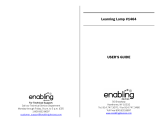
4
Contents
Welcome to the Classé family ..........................................................................5
a word about installation .......................................................................... 5
Unpacking and Placement ...............................................................................6
unpacking your CD player ........................................................................ 6
placement ................................................................................................ 6
ventilation ................................................................................................ 6
custom installations .................................................................................. 6
serial number ........................................................................................... 6
register your purchase! ............................................................................. 7
operating voltage ...................................................................................... 7
warm up/break-in period .......................................................................... 8
please read this manual… ........................................................................ 8
Special Design Features ...................................................................................9
flexible graphical user interface ................................................................ 9
highly refined circuit design ..................................................................... 9
extensive listening tests ............................................................................ 9
extraordinary longevity .......................................................................... 10
Front Panel .....................................................................................................11
Rear Panel .....................................................................................................13
The Remote Control .......................................................................................17
The Menu System ..........................................................................................20
operational menu ................................................................................... 20
playlist ............................................................................................. 20
controls menu .................................................................................. 21
repeat mode .................................................................................... 21
shuffle .............................................................................................. 21
time display ..................................................................................... 21
program ........................................................................................... 21
main menu system ................................................................................. 22
triggers ............................................................................................. 22
teach IR ........................................................................................... 22
display setup .................................................................................... 23
remote Fkeys ................................................................................... 23
status ............................................................................................... 23
version info ...................................................................................... 23
sensors ............................................................................................. 23
display setup menu ................................................................................ 24
brightness ........................................................................................ 24
timeout ............................................................................................ 24
language .......................................................................................... 25
remote Fkeys .......................................................................................... 25
cautionary note on Fkey use ............................................................ 25
Troubleshooting .............................................................................................26
Care and Maintenance ...................................................................................28
cleaning the cabinet ............................................................................... 28
cleaning theLCD touchscreen ................................................................. 28
installing the remote control batteries ..................................................... 28
Specifications ................................................................................................29
Dimensions ...................................................................................................30




















